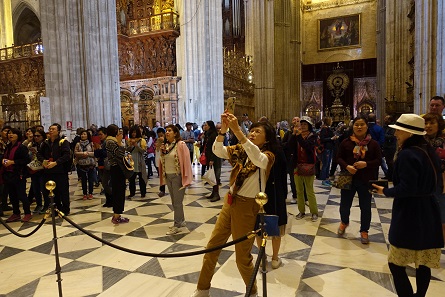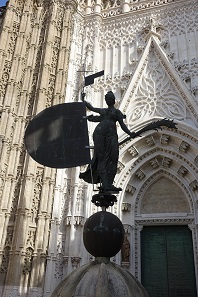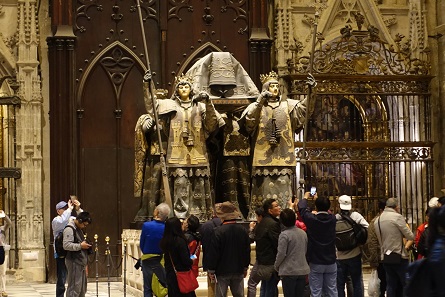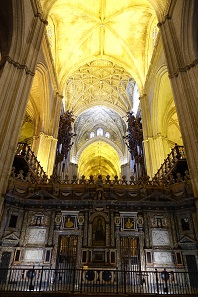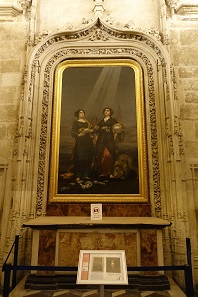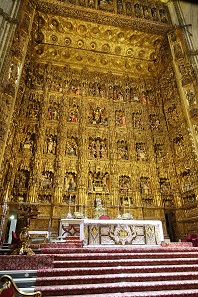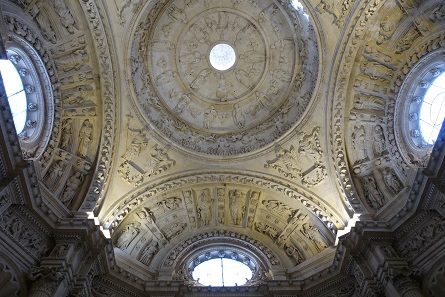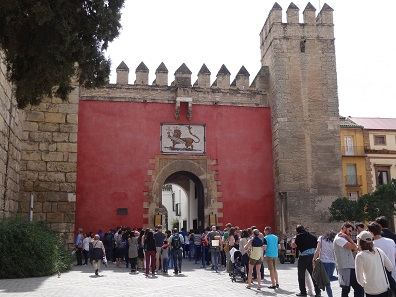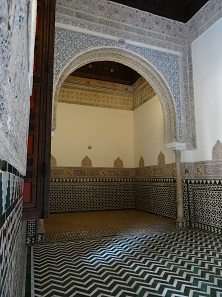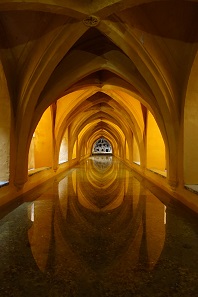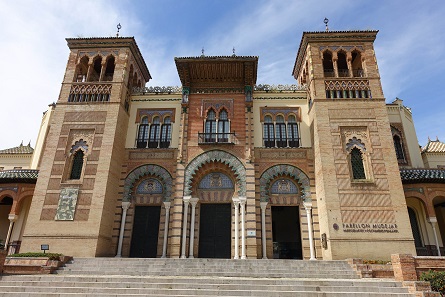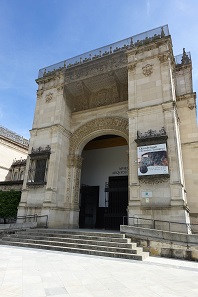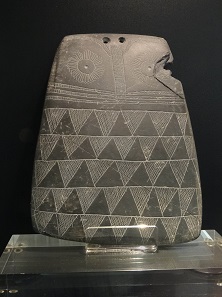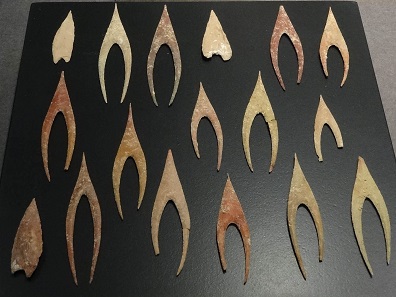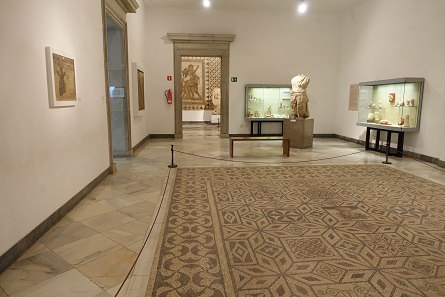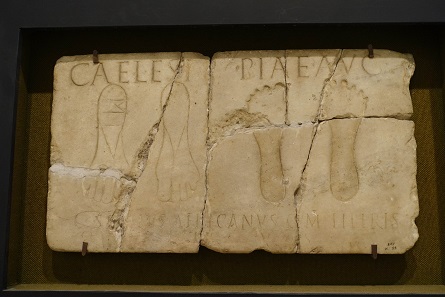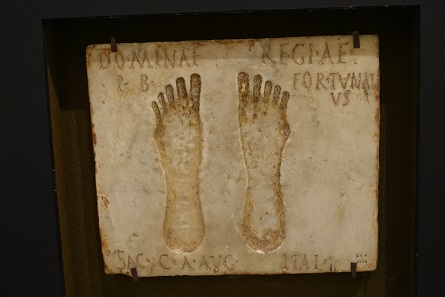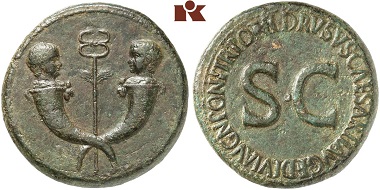by Ursula Kampmann
Translated by Almuth Klingner
October 4, 2018 – Southern Spain is simply fantastic. Too bad everybody knows that. Thus, myriads of tourists from around the globe visit the three metropolises everyone wants to see in their lifetime: Cordoba, Seville and Granada. In this part of our series, Seville is on our agenda. But please, not with our own car! What does Spain boast an excellent rail network for?
The modern Spanish express trains. Photo: KW.
Thursday, 30 March 2017
Today, we were planning a day trip to Seville. In order to not have to drive into Spain’s third-largest city by car, we opted for the train. At the station, we learned that there are two different ticket counters: one for tickets for immediate use, and one for tickets that aren’t valid before the next day. We know that now because, you guessed it, we queued at the wrong counter.
But that was not the only thing we learned. Whereas, where we come from, you go to the platform rather relaxed, in Spain – probably as a reaction to the terrible attack in Madrid’s central station Atocha –, there are quite extensive security checks before boarding the express trains. True Swiss that he is, my husband naturally carried a penknife in his pocket. And penknives are not allowed on the train. The nice man at the security check sternly warned Kurt not to play around with it on the train, gave it back to him and hoped we didn’t have any bad intentions. He was right, of course. The train made it to Seville without us having cut the conductor’s throat.
A bell tower named Giralda. Photo: KW.
Seville’s main station by the beautiful name of San Justa is quite far from the city center, so we took a cab to the famous cathedral. Which was a good idea, for, during the adventurous drive, we learned to really appreciate our smart choice of taking the train.
I admit, I found our fellow tourists more interesting than the tomb of Columbus, built around 1900. Photo: KW.
I believe I have already hinted at it in our last episode of the numismatic travelog, which covered Cordoba: We weren’t quite alone in Southern Spain. And yet, I was dumbfounded when I saw the long line of individual tourists wanting to enter the cathedral. (The group entrance is at a different spot.) Well, even the largest old town means nothing if all the tourists want to visit one church.
We got to know every little detail of this portal, since the queue for the ticket office wound around it. Photo: KW.
So, we had plenty of time to marvel at the cathedral’s outside while we were waiting in line. The Seville authorities apply an interesting strategy for not letting too many tourists into the cathedral at once: They simply open only two counters for buying the exorbitantly expensive tickets. And since the salespeople speak Spanish (and the average tourist does not), every ticket purchase takes some time.
The tomb of Christopher Columbus is always surrounded by tourist crowds. Even though, from an artistic point of view, it is just awful! Photo: KW.
If you would like to get an idea of the chaos that must have reigned at the construction site of Babylon right after the confusion of tongues, you should visit the Seville cathedral. Asia is omnipresent in every form: Japanese, Chinese, Indians, a huge number of Filipinos – I don’t think I’ve ever seen so many of them in one place. And they all pushed their way towards the tomb of Columbus. Besides the numerous Asians, there were, above all, French (rather strong-voiced) teenagers in hordes, trying to ignore the explanations of the accompanying teachers. In the corners, some German groups (very disciplined, all in one pile, dutifully following the guide and only getting unruly when bothered in picture-taking). Not to forget the swarms of Italian beauties that always looked anywhere the tour guide was NOT pointing. And in the midst of it all: us.
A look into the Santa Maria de la Sede. Photo: KW.
The Seville cathedral is huge. After all, it boasts about being the third-largest in the world (foregoing, though, the pompous markings embedded in the floor pointing out the others’ – smaller – sizes, like you find them in St. Peter’s Basilica). And in fact, pretty much everything in there is huge.
“Find the Goya” is a popular game in Spanish cathedrals. And there it is: depicting Santa Justa (like the train station) and Santa Rufina. Photo: KW.
There are over 500 paintings one could marvel at if one wished to do so. (We found the hidden Goya in the cathedral anyway.)
Better than Columbus’ tomb: the world’s largest altarpiece at 23 x 20 meters. And by the way, it is a major work from the Spanish Gothic period, created between 1482 and 1564. Photo: KW.
Only the telephoto lens makes the elaborate carvings visible. Photo: KW.
Despite all the art-historical sights of world importance, the people crowd in front of a tomb which is actually pretty mediocre – at least from an art-history point of view. The life-size monument for Columbus was created in the 19th century. And I don’t want to know how many times per hour it is being photographed! (Me + Columbus = awesome selfie!) What’s impressive is that the tomb actually does contain the mortal remains of the “discoverer of America”. That was indisputably clarified by means of DNA comparisons with brothers and descendants of Columbus. (Now, what exactly lies in the Columbus tomb in the Dominican Republic, we’d better not discuss here, or else we might upset our readers in the Dominican Republic…)
The cathedral features 80 chapels in which, at the end of the 19th century, there were still over 500 masses held every day. So, there is plenty to look at! Photo: KW.
We spent more than two hours in the cathedral, without being bored for a second!
A long line was waiting in front of the alcazar. Photo: KW.
After that, we hoped that the desire for lunch would keep a large part of the tourists from visiting the alcazar next to the cathedral. We were wrong. It took us more than 30 minutes to get a hold of the tickets. The reason for the queue’s slow progress were, once again, security checks. (Our Swiss penknife passed without issue. I suppose there weren’t any throats to be cut in the alcazar.)
An impressive building with places of strong Moorish influence. Photo: KW.
Tiles on walls and floors, and a constant push from behind if you take too long to get out of the way so the next person can take their selfie. Photo: KW.
A view of the garden. Photo: KW.
The so-called baths of Dona Maria de Padilla – a water reservoir remembering the mistress of Peter the Cruel. Photo: KW.
Maybe we were too tired, or maybe it was too crowded – the alcazar was great but didn’t really impress us as much as I had expected. Another reason could be the fact that there actually never was a point where you could have stopped and admired anything without someone walking right in front you or jostling you from behind. And that was during lunchtime on a random Thursday. I don’t want to know what goes on here on a weekend at 10 in the morning.
The exhibition buildings of the Ibero-American Exposition of 1929. Photo: KW.
We had one day for Seville, which meant we had to severely restrict ourselves in what we could visit. Apart from cathedral and alcazar we had opted – who would have thought – for the Archeological museum.
Hispalis (= Colonia Romula). Tiberius with Germanicus and Drusus. As. From Auction 61, Numismatik Naumann (2018), No. 307.
After all, Seville (= Hispalis) is ancient cultivated land. The Archeological museum is situated in a large park which was created in 1929 on occasion of the Ibero-American Exposition. On the edge of the park, we found a bar where we could get something to eat. Let’s say, it satisfied the need for nutrition. Any specific taste could not really be identified.
The Museum of Arts and Popular Customs. If only we had had more time … Photo: KW.
But after all, we only needed to rest our feet a little before tackling the long walk across the María Luisa Park. To date, it holds the numerous pavilions that were erected for the exposition. The Museum of Arts and Popular Customs in the Mudéjar style is especially picturesque.
The entrance to the Archeological Museum. Photo: KW.
The Archeological Museum occupies a building of Isabelline style and offers finds that can only surprise you. We did expect some Roman stuff, given that Seville is very close to famous Italica, birthplace of Roman Emperors Trajan and Hadrian.
Idol from the 3rd millennium BC. Photo: KW.
Stele with image of an idol from the 10th-7th century BC. Photo: KW.
Arrowheads made of silex. Photo: KW.
But the pre- and early history items were also very impressive: the idols, the masterfully crafted silex arrowheads, the engraved tombstones!
A look into the exhibition of Roman finds from Italica. Photo: KW.
Head of Alexander, parian marble, from the era of Hadrian. Photo: KW.
Naturally, for admirers of the Nerva-Antonine (“adoptive”) emperors, the Roman finds are much more impressive. Italica was founded during the Second Punic War by Scipio Africanus. We made a plan to visit its ruins later on our trip.
Votive deposits with feet – apparently quite frequent in North Africa. Photo: KW.
And another one. Photo: KW.
Probably the oddest things were strange votive deposits showing the feet of the person offering them. The believers supposedly immortalized themselves in this way when turning to Isis, Nemesis or Juno Caelestis. The votive deposits are said to have been found in the amphitheater and the theater of Italica – and there are plenty of them. In science, they’re called in nicest Latin “plantae pedum”, and Italica seems to be a major discovery site apart from North Africa. Which is no surprise when you take a look at the map. Africa simply is really, really close.
The other comparative pieces are from Greece. And in fact, if you look back at Part 5 of our numismatic diary of 2011, where we describe our visit of Dion, you will find similar items.
Tiberius. Sestertius depicting Tiberius Gemellus and Germanicus. Both carry a bulla around their necks. From Künker auction 270 (2015), No. 8590.
And this is what a bulla actually looked like. Photo: KW.
Of course, once again there were loads of interesting details in the showcases, things you don’t find in every museum…
The treasure find of Tomares. Photo: KW.
The surprising highlight was the treasure find of Tomares, which we covered extensively on CoinsWeekly. Part of that enormous find of folles was on display in Seville.
Some of the cleansed folles. Photo: KW.
Inside 19 (!) amphorae, construction workers found about 600kg of coins, mostly folles from the tetrarchs. As always, the media spoke of “priceless” value. We calculated a real value of 75,000 euros. Although, of course, the scientific value can only be determined once the find has been published and scientifically categorized.
Directly opposite, we were surprised by a room dedicated to treasure finds from the surrounding area. Unfortunately, the best pieces were only on display as copies, but we were running out of time anyway, having to start making our way back to the train station.
At this point, we were regretting all that time we had wasted for that overcrowded alcazar. We could have used it so much better here. So, from now on, as a matter of principle in overcrowded Spain, the Archeological Museum will be the first thing we visit in any town! What is left of our time after that can be spent on the so-called sights.
We weren’t flexible for we had been forced to already settle on a return time upon buying the train tickets. That is customary in Spain, since the ticket includes the seat reservation. Back in Cordoba, 6:45 pm had seemed incredibly late, but now we would have loved to stay a little longer. But you can only change to an earlier train, not a later one!
Our problem was the lack of a taxi rank near the Archeological Museum. So, we waited by the side of the road, trying to understand the system of telling apart occupied cabs and free cabs. Not easy when there are only occupied ones coming down the street. Finally, finally, an empty taxi stopped next to us and took us to the station.
We were well in time, but nevertheless decided to go straight to the platform. For Seville is one final destination of an AVE train with only two other stops, Cordoba and final destination Madrid. It turned out to be a smart move, because once again, a long line in front of the security check slowed us down. This time, a sign pointed out that penknives were strictly prohibited on the train. I put ours in my handbag and decided to play dumb tourist. Which wasn’t even necessary: The bag was X-rayed, but nothing happened. We could have cut the conductor’s throat on the way back, too. But we had no desire to do so.
A little before 8, we were back at the hotel and sat down on the porch, finishing off the day with a glass of the local sweet wine. Bats were flying around, the crescent moon scenically unfolded in the sky, and I’m seriously searching for valid reasons why I should return home at all.
In the next episode, we’re heading towards the coast, visiting Baelo Claudia, which is not the birthplace of any emperor, but features an excavation site well worth seeing.
You can find all episodes of the numismatic travelog “To Spain!” here.






